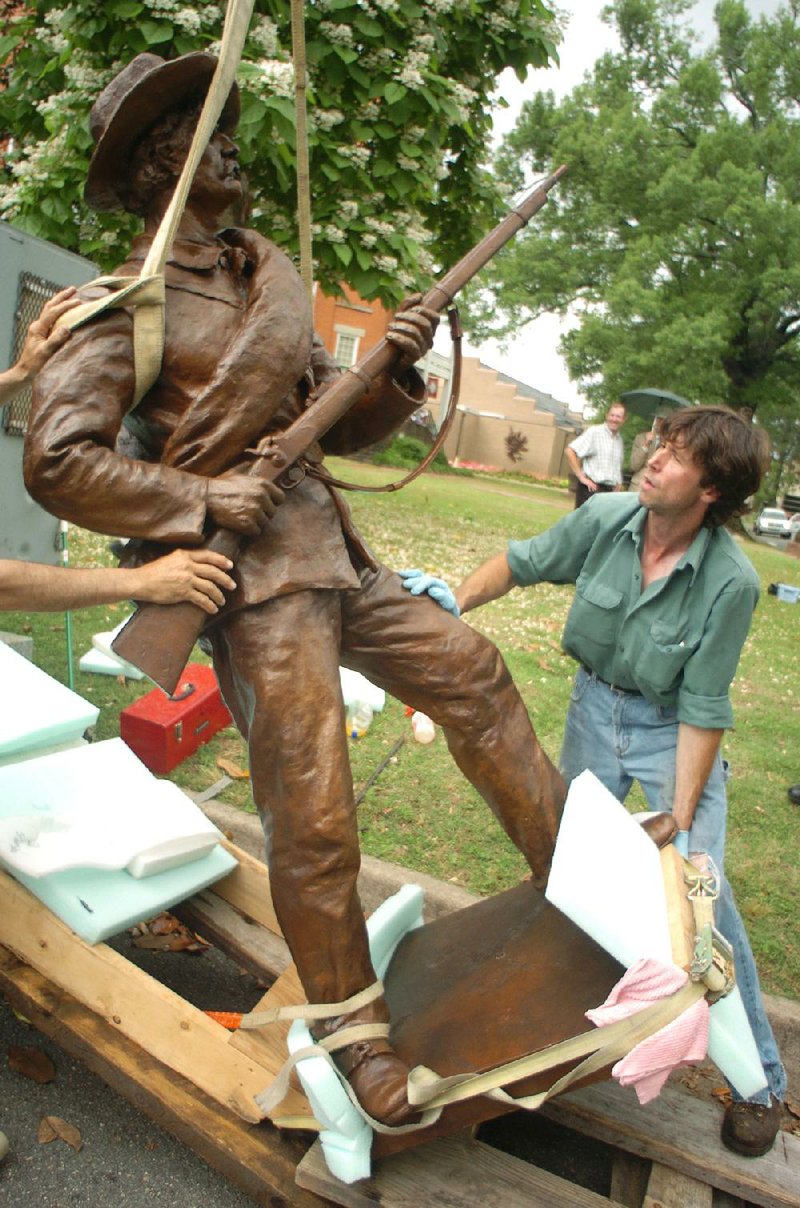Dear Otus,
I notice with not a little consternation the push sweeping the nation to remove statuary honoring Confederate heroes from public spaces. It seems a bit extreme to me.
-- Patrick Ronayne,

Disclaimer: Fayetteville-born Otus the Head Cat's award-winning column of 👉 humorous fabrication 👈 appears every Saturday.
Helena-West Helena
Dear Patrick,
It was wholly a pleasure to hear from you and to thank you for the opportunity to point out that public opinion has finally agreed that reminders of the "late unpleasantness" need to be confined to more appropriate places.
The War of Northern Aggression is a distant memory and it's high time Southerners embraced the outcome and, to quote that renowned philosopher Idina Menzel, "Let it go, let it go. Can't hold it back anymore."
Let's face it. Since we did not have Andrew Jackson around to deflect the onrushing national agony in 1861, the divisive issues in this country were settled on the sanguinary battlefield.
About 625,000 died in the Civil War -- 2 percent of the population at the time. That would be the equivalent of about 6.8 million Americans dying today.
At war's end, the United States began the slow change to a singular noun -- the United States are, became the United States is. A subject/verb example comes from Sir Winston Churchill: "The United States invariably does the right thing, after having exhausted every other alternative."
And now it is time to do the right thing with our Confederate statuary. Forget the specious, disingenuous and mendacious "it's not hate, it's heritage" argument. There is a time and place for everything and in the public venue is not the place.
In 2015, Little Rock did the right thing and changed the name of Confederate Boulevard to Springer Boulevard. That was the same year South Carolina finally removed the Confederate battle flag from its Capitol grounds.
At the ceremony, one onlooker said, "I have respect for the people that honor [the battle flag] as their heritage, but it's symbolic of a lot of things that are negative and a lot of things that are part of the dark part of our country's history."
Since 2015, there have been calls for lone holdout Mississippi to change its state flag, which includes the Confederate battle flag's saltire in the canton.
Georgia removed the Confederate banner from its state flag in 2001. But Georgia's current state flag (adopted in 2003) is still a variation of the first Confederate "stars and bars" national flag.
Students of vexillology note that the Arkansas state flag is, itself a sort of homage to the Confederate battle flag, because the design around the central white diamond evokes the saltire of the rebel flag.
Which brings us to the statues.
Controversy continues in Memphis over the proposed removal of a statue of Confederate Gen. Nathan Bedford Forrest from a park near downtown. The monument is still there despite a City Council vote to remove it.
Meanwhile, four Confederate statues have come down in New Orleans since April after votes from the New Orleans City Council and a push by Mayor Mitch Landrieu against what he terms the "cult of the Lost Cause."
Today, the only acceptable location for Confederate statuary is on the very battlefields where the soldiers fought.
But now, thanks to a visionary city board, there is an appropriate dedicated place for the "lost" statues to reside, where buffs can come visit them as historical artifacts -- Little Rock and Pulaski County's Two Rivers Park.
The large 140-acre field initially set aside by then-Pulaski County Judge F.G. "Buddy" Villines as the Garden of Trees has been rededicated as the "Field of Orphan Statues." The Capital Guards statue from MacArthur Park is first and will be installed June 10. The three Confederate monuments on the state Capitol grounds will be relocated July 4.
The New Orleans statues will be installed in the fall, and Memphis' Forrest statue has a space reserved. Meanwhile, there are 30 Arkansas Confederate statues and monuments from Bentonville to Lake Village set to relocate to Two Rivers Park in the next year.
Until next time, Kalaka reminds you a small museum is planned to hold all the "Forget, Hell!" license plates, "The South Will Rise Again" bumper stickers and Lynyrd Skynyrd albums.
Disclaimer
Fayetteville-born Otus the Head Cat's award-winning column of
Z humorous fabrication X
appears every Saturday. Email:
HomeStyle on 06/03/2017

